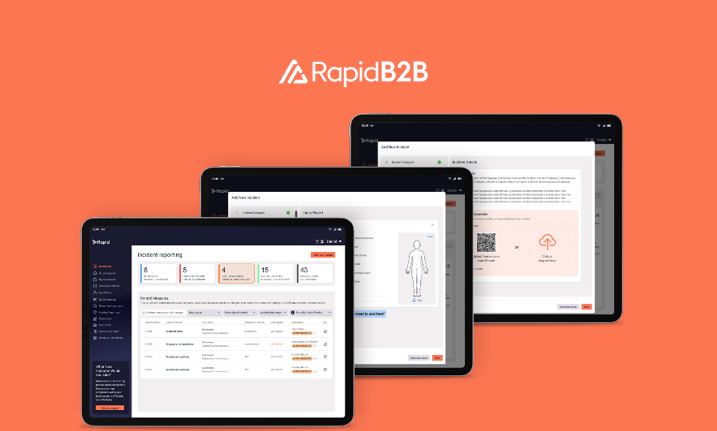

Conducting regular internal audits is crucial for a business to ensure a safe environment. While many may be familiar with assessments like a financial audit for statutory compliance, internal audits can aid in hazard identification, compliance with WHS laws, and overall enhancement of workplace safety.
Safety audits are invaluable and multifaceted. These reviews are designed to evaluate an organisation’s safety policies, practices, and procedures to ensure compliance with regulatory standards and to identify areas for improvement. The scope of a safety audit may encompass the following areas: security; compliance with regulations; workplace hazards; safety procedures and protocols; employee training and competence; equipment maintenance; record keeping; safety culture; effectiveness of existing health and safety programmes.
This article will detail a step-by-step guide to conducting effective workplace safety audits so you can improve your safety performance, reduce the risk of accidents and foster a safer working environment.
How to conduct effective workplace audits
There are numerous methods to approach conducting a safety audit, but the fundamental steps remain consistent and are essential for ensuring a thorough and effective audit process.
Step 1: Planning the safety audit
Check relevant legislation
Research and ensure familiarity with current WHS laws and standards. Staying updated ensures the audit process is aligned with legal requirements, thereby avoiding penalties and ensuring a safe working environment.
Review past records
Historical data, such as previous audit results and incident reports, is invaluable for identifying key areas of investigation. Utilising safety management software like Rapid Auditor, Rapid Incident Reporting, and Rapid Risk software can help to simplify the process by having all information accessible online.
Recommended reading: Why your business needs incident management software
Gather tools and team
Ensure you have all necessary audit tools, such as equipment testing devices, and select team members with the required expertise. A well-equipped and knowledgeable team can effectively identify hazards and recommend appropriate measures.
Prepare a checklist
A comprehensive audit checklist ensures all areas are covered. Our flexible audit management software allows you to develop detailed checklists remotely using any internet-connected device. SafeWork SA’s “Simple steps to safety self-audit” tool includes a checklist that can be used as inspiration.
Our audit software also contains a library of pre-built checklists such as an Area Presentation Checklist, and PPE Review so you can be certain the basics are covered.
Step 2: Conduct the safety audit
Following this robust preparation, you are now ready to conduct the safety audit. It’s crucial to adhere to the actions outlined in your checklist, which may include:
- Walkthrough: Physically inspect the workplace, observing processes, equipment, materials, and employee behaviours.
- Employee interviews: Engage with employees to gather insights on current practices and potential improvements.
- Review documentation: Examine safety manuals, training records, incident reports, and other relevant safety documents to ensure compliance.
To ensure comprehensive site coverage, consider pre-assigning specific inspection areas to each member of your audit team. Auditors should then be meticulous in documenting their findings, including taking notes and photos of any non-compliance observed.
Our audit management system features enhancements that allow you to access, review, and update all necessary documents, including photos, directly from a phone or other portable device. Actions can also easily be added for non-compliant items, which will link back to the audit and appear in the report once submitted.
This digital solution eliminates the need to manage cumbersome paper documents and the tedious task of transcribing notes later, thereby improving efficiency and ensuring that all records are up-to-date.
Step 3: Review findings
Compiling these findings into a detailed report will ensure follow-up actions are clear and able to be assigned. Our audit management software simplifies this process by allowing you to export reports to Excel for further in-depth analysis such as trend identification.
An authorised admin can then review the submitted audit and approve or reject the actions suggested in the audit.
Step 4: Implement corrective and preventive actions
Develop an action plan based on the audit findings to address non-compliance and hazards. This plan should outline specific steps to correct identified issues and the consequent personal responsibilities for those involved. Prioritise actions by focusing on high-risk issues first and setting clear deadlines for implementing corrective measures.
Our audit management software can support the plan, as you can easily keep track of completed tasks, and receive reminders for upcoming or overdue tasks. It also allows you to create actions ad-hoc that might have been overlooked in the audit, such as repetitive tasks like regular asset maintenance. Its integration with our other WHS tools Rapid Induct and Contractor Management also ensures that assigning audits and tasks to specific employees and contractors is a breeze.
Step 5: Communicate the results
Share the audit report by distributing the findings and corrective actions to all relevant stakeholders. This will include engaging with employees, whose active participation and feedback can provide valuable insights and contribute to the successful implementation of the action plan. Overall, clear communication of the audit results fosters transparency and accountability, making it easier to implement the necessary changes.
These steps will help you conduct a thorough and effective workplace audit that improves safety and compliance.
How Rapid Global can help streamline your audit process with audit software
With the right compliance audit software in place, you can not only streamline the audit process but enhance your ability to manage your safety obligations.
Want to see Rapid Auditor in action? Talk to our sales team today to explore how Rapid can help protect your operations in the ever-changing business landscape.







